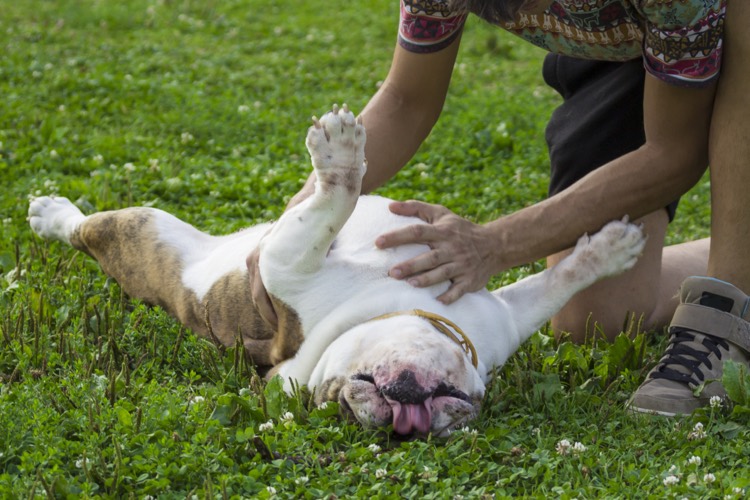
She was the most wonderful dog. She was with me during veterinary school and my marriage. She was my childhood friend.
Veena, who was then 14 years old suffered from severe arthritis of the hips, back, and GI tract, as well as difficulty in seeing. Although I was a vet, I had many options available to her including palliative and hospice care. But as a pet owner, all I saw in front of my eyes was the heartbreaking decision.
As all of my clients do, I also wished my dog died in peace and comfort when the going got tough. It was important to me to avoid the pain of making that decision for my dog. Nature rarely provides such a luxury. It’s our responsibility to provide this to our animals.
Veena became ill and in pain suddenly. I was forced to take a very personal, but important decision about what is best for her. It was only humane to end her pain by killing her.
It’s a difficult decision, so you need to talk with your vet about what is best for both you and your animal. Here’s some information to help prepare you for the time when you have to put your pet down.
When is it time to put a dog down?
Euthanasia can be a great gift for your dog when he is in pain. Although it may seem difficult, euthanasia is the most compassionate thing that you can do to your dog. How do you decide when to say goodbye?
Discuss your dog’s quality of life and health with your vet. Your veterinarian is uniquely qualified to provide objective advice based on his or her knowledge of the condition of your dog.
You can also ask your vet these questions:
- Is my dog living a healthy life? Do they eat and drink? Can they defecate/urinate? Are they able to interact with humans?
- Is my dog more likely to have a good day than a bad one?
- Can my dog recover with a plan of treatment that I am willing to commit both personally and financially?
You can improve the quality of your dog’s life by modifying its environment. Your vet may provide medication, treatments, or home modifications.
If your pet is not comfortable, you may need to discuss euthanasia with your veterinarian. You should discuss euthanasia options with your vet if you answered “no”.
Dog Quality of Life Scale
The Quality of Life Scale was created by Dr. Alice Villalobos, a veterinary oncologist to make it easier for pet owners and provide them with a structure to assess their dog’s life.
The H5M2 scale can also be used to describe her scale. You can assess the quality of your pet’s life by using these letters. On a scale of 0-10, 10 is the ideal score for each section. The total score should be greater than 35. If it is lower, your dog may have a poorer quality of life.
HM contains:
- The ability of the pet to breathe easily and without discomfort is assessed.
- Does your pet have enough energy to sustain their current body condition and maintain a healthy weight?
- Does your dog drink enough water to stay hydrated on its own? Or do they need subcutaneous fluids for this purpose?
- How can you keep your dog clean and avoid sores caused by lying down in the same place for too long?
- Happiness is not just a matter of judging whether or not your dog appears happy. Do they engage with toys and people that they enjoyed before, or are they withdrawn?
- Mobility – Can your dog get up on its own and walk around freely? Are they at any risk of falling or hurting themselves while walking?
- Keep a diary or a daily calendar to answer the question.
Lap of Love is a network of veterinarians who are dedicated to providing end-of-life care. They also have several resources which can be used in determining the quality of your pet’s life.
What is the service of dog euthanasia?
Only veterinarians can provide euthanasia. You will be guided through the process by your veterinarian to help make sure that you are making an informed decision.
You may choose at-home pet euthanasia or bring your pet into the veterinarian’s office. Alternatively, the ASPCA/Humane Society in your area may provide low-cost euthanasia services.
Euthanasia costs vary widely depending on your pet’s size, location, services, aftercare and the place the procedure was performed.
Decide what’s right for your dog
We now have dedicated methods to support dogs’ quality of life.
Palliative care is similar to hospice care and focuses on the comfort of your dog as they approach their end-of-life. It also offers emotional support to their caregivers. Palliative Care is similar to Hospice care. However, palliative treatment still involves direct medical attention to your dog’s condition.
Hospice and palliative treatment include a plan for saying goodbye to your pet when it is time to make sure that he has a peaceful death. It’s a personal choice how you spend your last moments together with your dog and remember him/her after. Your veterinarian is there to assist you if you have any questions about how to improve the quality of your pet’s life, about euthanasia or even aftercare.